Open Journal of Analytical and Bioanalytical Chemistry
Determination of pyridoxine by means of an indicator diazo-test strip
Vera M Ostrovskaya1, Alexander V Ivanov2* and Dmitry Yu Marchenko3
2Chemistry Department, M.V. Lomonosov Moscow State University, Leninskie Gory, 1, build. 3, Moscow, 119991, Russia
3Gubkin Russian State University of Oil and Gas (National Research University), Leninsky Prospekt, 65, build. 1, Moscow, 119991, Russia
Cite this as
Ostrovskaya VM, Ivanov AV, Marchenko DY (2019) Determination of pyridoxine by means of an indicator diazo-test strip. Open J Anal Bioanal Chem 3(1): 001-005. DOI: 10.17352/ojabc.000005Pyridoxine (vitamin B6) plays an important role in the body’s metabolism. Reaction of azocoupling with diazoaryl compound underlies in a basis a known photometric method of its chemical analysis. This method is not selective. In the present work the test method of determination of the pyridoxine containing in a molecule hydroxyarylgroup, was proposed by them azocoupling with chromogenic indicator diazo test strip, consisting of a covalently fixed on cellulose reagent with functional diazoaryl group, attached to the cellulose carrier through 1,3-diphenoxypropane bridge. This test strip interaction with resulted in formation of cellulose tetradentate chelating agent, capable to enter the subsequent chromogenic reaction with copper (II) ion. Formation of blue-violet complex of azoderivative pyridoxine with copper was used for determination of the content of pyridoxine (vitamin B6) in a number of his pharmaceutical preparations.
Abbreviations
RIP: Reagent Indicator Paper; TS: Test Strip; TS RIP-M: Product of Reaction of RIP with metal ions.
Introduction
Pyridoxine (vitamin B6) plays an important role in the body’s metabolism: it is necessary for the normal functioning of the central and peripheral nervous system; is a co-enzyme of a number of enzymes acting on a non-oxidative exchange of amino acids; participates in the exchange of tryptophan, methionine, cysteine, glutamic and other amino acids and promotes the normalization of lipid metabolism [1].
There are known methods for the determination of pyridoxine in various preparations by means of chemical indicators – diazo compounds - in combination with physicochemical methods of analysis.
Semi-quantitative determination of pyridoxine in urine was carried out by preliminary separation of it from other substances by electrophoresis on paper, with the appearance of spots on the electrophoregram with a diazotized streptocide with mercury dichloride to form complexes of azocompounds of red-violet color. The drawback of the method was a large error [2]. The determination of pyridoxine in the presence of vitamins was carried out by a preliminary azocoupling with diazotized 4-sulfamic acid in the micellar medium of N-cetylpyridinium chloride. In this case, the selectivity of the determination was achieved due to the differential-kinetic approach, based on the inhibiting effect of boric acid [3], and also to the regime of spectrophotometric flow-injection analysis [4]. Another approach was proposed in the multicommutation analysis mode based on the reaction of combined oxidation of pyridoxine and N, N-diethyl-para-phenylenediamine with hexacyanoferrate (III) with a sensitivity of 0.1 mg/L [5] and 0.06 mg/L with pre-concentration on a chromatographic column [6]. Methods are characterized by the complexity of implementation and high cost of equipment. Determination of pyridoxine by the method of azocoupling with diazotized para-nitroaniline in the presence of cetyltrimethylammonium bromide was carried out with high sensitivity – 0.2 mg/L, but this group method is not suitable for determining the authenticity of the medication [7].
Determination of vitamin B6 in its tablets by means of an electrochemical method with a membrane electrode was performed by the “introduced-found” method, and was not tested on real pharmaceutical preparations, which limits its use [8].
It was previously noted [9], that the determination of pyridoxine is hampered by phenol and aniline, also active to azocoupling reaction with a diazo compound, on this reason their complete separation is necessary, which complicates the method of analysis.
The used methods of spectrophotometry by means of diazo reagents, entering with pyridoxine into the azocoupling reaction refer to group [10–15]. Test methods on the basis of the cellulose carrier for determination of medicines were not developed yet [16, 17]. The known method of determination of vitamin B6 on a basis of solid phase mineral sorbent with bromphenol blue as an indicator and iron (II) ions. This method did not differ selectivity, included labour-consuming procedures with three stages of work, that is not suitable for extra-laboratory conditions [18].
Each of the described methods for the determination of pyridoxine differed in its features, but in one or other case there were drawbacks: the complexity and high cost of equipment, the laboriousness and duration of the analysis technique, limited selectivity, the application of the “additives” method rather than direct determination, significant error in determination, unsuitable application of the method in non-laboratory conditions.
The problem of selective determination of pyridoxine proves development of simple and reliable express methods of his analysis, which are required in conditions of clinical laboratory, and also in non-laboratory conditions of a pharmacy.
The purpose of this work is to develop a selective test method for the chemical analysis of pyridoxine, through its template azocoupling with a chromogenic solid phase diazo reagent in the presence of metal ions.
Materials and Methods
Reagents
Standard solutions of metal ions and standard buffer solutions were prepared by dissolution of weighed portions of chemically pure grade reagents in doubly distilled water. Pyridoxine hydrochloride, 3,5-Dihydroxymethyl-2-methylpyridin-3-ol hydrochloride, Vitamine B6 min 98 %; aniline for synthesis 99 %, Phenol for synthesis 99 % (Merck) were used. “Cell” (see the scheme) - epoxidized chromatographic paper (Whatman) based on cellulose containing 5% of the epoxy groups - was used as a carrier of reagents for the preparation of test strips [19].
A sample of reagent indicator paper, prepared for interaction with pyridoxine
The above obtained cellulose carrier (Cell) - was impregnated with 1% solution of 1,5-bis(2-amino-5-nitrophenyl)-1,5-dioxapentane in CHCl3 and was heated for 0.5 hours at 130°C. The obtained reagent indicator paper (RIP) based on 2-hydroxy-4-hydro-4-{2’-[5’’-(2-amino-5-nitrophenyl)-1’’,5’’-dioxapentyl]-4’-nitrophenyl}-4-azabutylcellulose was placed in a 1% HCl water solution and 0.2% NaNO2 water solution at 0−2°C during 20 minutes. The surplus of reaction solution was removed and the paper was treated with a 1% water solution of 4-toluenesulfonic acid and dried. RIP-Diazo, based on RIP with 4-tolyl sulfate, capable to the reaction of azocoupling with aromatic compounds (RH), was synthesized according [20] to the following scheme:
where pyridoxine was used as RH.
Indicator paper (RIP-Diazo) was cut into on paper tapes with a width of 25 mm. Such a tape was attached along the edge to a white polymer propylene tape with a width of 30 mm. The resulting blank was cut across to a test strip (TS) with a polymer holder 9.8 ± 0.05 mm wide by means of a device for dimensional cutting of indicator blanks on solid-phase supports [21]. Paper TS with a size of 40 x 9.8 ± 0.05 mm of yellow-white color (TS RIP-Diazo) were prepared for quantitative sorption-spectrophotometric determination of pyridoxine.
Apparatus
The diffuse reflectance spectra of the test strips [in the 400-700 nm wavelength range, as the Kubelka-Munk function F = (1-R)2/2R, where R is the reflection coefficient] were recorded on Eye-One Pro mini-spectrophotometer (X-Rite Inc., USA). The device has an input window of the detector with a diameter of 4 mm and a stand to prevent contact of the eyepiece with the indicator area of the TS.
Methods of determination
The determination of pyridoxine was based on his azo coupling reaction with the TS RIP-Diazo to form test strips with azo-pyridoxine (TS RIP-Azo) and the subsequent complexation reaction of the TS RIP-Azo with copper ion, selected after testing for chromogenic reactions of pyridoxine with 14 metal ions: Ag, Al, Au(III), Ba, Bi(III), Fe(III), Ca, Cd, Co(II), Cu(II), Mg, Mn(II), Ni, Pb, Zn.
To do this, 0.5 mL of aqueous solution of pyridoxine was adjusted to a optimal pH 3−8 with a buffer solution. The TS RIP-Diazo with the holder was immersed with a paper end into the manufactured pyridoxine sample for 1−5 min, the reaction solution was removed. 50 μL of a standard metal solution and an acetate buffer solution up to pH 5 were added. Color change of the TS was observed before and after the reaction with the metal. The TS were placed on chromatographic paper and was dried. The diffuse reflectance spectrum of the TS RIP-Azo and the product of its reaction with the metal ion (TS RIP-M) were recorded.
Determination of the pyridoxine content in a pharmaceutical preparation. 1 tablet with a weight of 5 mg was dissolved in water in a volumetric flask, diluted up to a predetermined concentration, 20 mL of sample was taken, placed in a Petri dish with a diameter of 6 cm, the solution was adjusted up to pH of 3–8. The paper TS RIP-Diazo was lowered into the solution for 20 min, 1 mL of a standard solution of copper (II) was added, adjusted up to рН 5, then ТS was dried. The diffuse reflectance spectrum of TS was registered and the function F was calculated. The concentration of the main substance in the sample was determined from the graduation plot for the range of pyridoxine concentrations of 0.2−10 mg/L.
Results and Discussion
ТS RIP-Diazo on a basis 2-hydroxy-4-nitroso-4-{2’-[5’’-(2-diazo-5-nitrophenyl)-1’’,5’’-dioxapentyl]-4’-nitrophenyl}-4-azabutylcellulose of 4-tolyl sulfate was synthesized by the method [20] and entered into a reaction of a azocoupling with pyridoxine with the formation of RIP-Azo-Pyridoxine – a tetradentate reagent, that interacted with metal ions by the formation of complexes with a bathochromic shift: silver – brown, copper – blue-violet, cobalt and zinc – dark brown color (Figure 1).
The ocurrence of the azo group –N=N– in the pyridoxine molecule during the azocoupling process, can pass only to the para-position of the pуridine ring, towards to the 1st type orientator OH-group.
In the pyridyl group of the pyridoxine molecule, there is only one para-position active to the azo-coupling towards to the hydroxy group, all other sites are occupied by other substituents. However, the formed RIР-Azo-Pyridoxine could be in the form of equilibrium isomers with tetradentate coordination groups of the type [N1O3] or [N2O2]. Pyridoxine complex compounds were formed with heavy metal ions (Figure 1), but not with aluminum, which is typical of coordination compounds of the [N2O2] type.
where
The reaction of pyridoxine with TS RIP-Diazo and copper (II) is interesting in the following properties: there is bathochromic shift with color transitions from light yellow to red-orange in the first stage and then to blue-violet in the second stage in a wide pH range 2−7; stability, high speed and high sensitivity are characterized for the color reaction. This allowed to use of TS RIP-Diazo and this test-reaction for determination of the content of pyridoxine in its real pharmaceutical preparations, produced in the form of tablets, by sorption of pyridoxine from the sample by a test strip and subsequent determination of by the diffuse reflectance spectra. To do this, the tablet was rubbed, pyridoxine hydrochloride was extracted from the obtained powder with deionized water (100 mL for every 5 mg specified in the drug instructions). If the precipitate did not dissolve completely, the extract was separated from the precipitate, diluted to a theoretically given concentration, and analyzed by TS RIP-Diazo according to the procedure described in the experimental section. Three-dimensional and conventional reflection spectra of TS were recorded for two concentration ranges: 0.1–10 mg/L with a sample volume of 20 mL, a test reaction time of 20 min (Figure 2A, 3A) and 3–70 mg/L with a decrease in sample volume to 6 mL and the time of the test reaction was 5 min (Figure 2B, 3B). The lower limit of the determined contents can be reduced by increasing the sample volume and the TS exposure time in the sample.
The first concentration range (0.1–10 mg/L) was the most suitable for these objects of analysis. According to the reflection spectra in the region of 540–570 nm (Figure 3A), analytical calibrations were carried out using the TS RIP-Diazo in the presence of copper ions to determine the content of pyridoxine hydrochloride and a calibration curve was selected at a wavelength of 570 nm (Figure 4). which determined the content of pyridoxine hydrochloride in tablets of pharmaceutical preparations (Table 1).
The significant content of excipients and fillers in these tablets did not interfere with the analysis. Phenol and aniline also formed with RIP-Diazo azo compounds, conventionally designated as RIP-Azo-Phenol and RIP-Diazoamin, light yellow color with maximum reflection spectra as the F function in the ultraviolet region (Figure 1), which did not form colored compounds with all studied metal ions and did not interfere with the determination of pyridoxine in a tested amount of up to 2% by weight of pyridoxine. During the analysis in the absence of copper the results were overestimated.
Thus, an approach to creating a selective test method for the determination of pyridoxine, active in the azo coupling reaction using an indicator test strip containing a functional diazoaryl group covalently bound to a cellulosic carrier through 1,3-difenoxypropane bridge, has been proposed.
As a result of the test reaction of azo coupling with pyridoxine on the indicator strip, a tetradentate coordination group was formed, which includes the diester fragment, azo group, and the amino group from the detected pyridoxine. Due to this, the product of combining an indicator strip with pyridoxine could give selective color reactions with metal ions, observed visually or by means of a mini spectrophotometer: cmin = 0.2 ppm, at Р = 0.95 and n = 3, sr = 0.12–0.18.
Conclusions
A sorption-spectrometric method for the determination of pyridoxine was developed by its template azo coupling with an indicator test strip based on 2-hydroxy-4-nitroso-4- {2 ‘- [5 “- (2-diazo-5-nitrophenyl) -1”, 5 “- dioxapentyl] -4’-nitrophenyl} -4-azabutylcellulose 4-tolyl sulfate (RIP-Diazo) in the presence of copper (II), the subsequent measurement of the reflection coefficient as function F of the test strip at 570 nm.
- HY Aboul-Enein MA (1984) Loutfy, Pyridoxine hydrochloride. / In book Alanalytical profiles of drug substance. Elsevier Inc 13: 447-478.
- Aliev AM, Onov AO (1972) The complexing properties application of azo derivateves of B6 vitamins for its determination by an electrophoresis on a paper. Laboratornoe delo (in Russian). 8: 470-473.
- Monferrer-Pons L, Alvarez-Rodríguez L, Esteve-Romero J, García-Alvarez-Coque MC (1999) Spectrophotometric determination of B6 vitamins by coupling with diazotized p-sulfanic acid in micellar medium of N-cetylpyridinium chloride. Anal Lett 32: 51-63. Link: https://bit.ly/2RB2LrU
- Monferrer-Pons L, Alvarez-Rodríguez L, Esteve-Romero J, Garcia-Alvarez-Coque MC (2000) Flow-injection analysis of pyridoxine hydrochloride by coupling with the diazonium ion of p-sulfanilic acid. Anal Lett 33: 539–552. Link: https://bit.ly/2ISs31Z
- Rocha F, Filho OF, Reis BF (2003) A multicommuted flow system for sequential spectrophotometric determination of hydrosoluble vitamins in pharmaceutical preparations. Talanta 59: 191-200. Link: https://bit.ly/2IPHYOy
- Portela JG, Costa ACS, Teixeira LSG (2004) Determination of vitamin B6 in pharmaceutical formulation by flow-injection-solid phase spectrophotometry. J Pharm Biomed Anal34: 543-549. Link: https://bit.ly/31Zpkvs
- Kadir ANA (2010) Spectrophotometric determination of vitamin B6 by coupling with diazotized p-nitroaniline. Jour Raf Sci 21: 49-59. Link: https://bit.ly/2xdlctq
- Varygina OV, Chernova RK, Сusina EF (2013) ISE on vitamin B6. Proceedings Saratov University. Chemistry, Biology, Ecology 13: 3-7.
- Hochberg M, Melnick D, Oser BL (1944) On the stability of pyridoxine. J Biol Chem155: 109-119.
- Calatayud JM (2005) Spectrophotometry. Pharmaceutical applications / In book: Encyclopedia of analytical science. 2nd ed. Editors: P. Worsfold, A. Townsend C Poole Elsevier 380-383.
- Hansen SH, Pedersen-Bjergaard S, Rasmussen KE (2011) Introduction to pharmaceutical chemical analysis. Publ Online. Link: https://bit.ly/2X7nLI7
- Watson DG (2012) Pharmaceutical analysis, 3 ed. London. 441. Link: https://bit.ly/31TIe6V
- Ahuja S, Skipinski S (2012) Handbook modern pharmaceutical analysis. V.3. Press 566. Link: https://bit.ly/2FDRJ0e
- Calatayud JM, Zamora LL (2013) Spectrophotometry: pharmaceutical applications. / In book: Reference module in chemistry, molecular sciences and chemical engineering 9-13. Link:
- European Pharmacopoeia. 9th Edition. 2017. Link: https://bit.ly/2KSHXYx.
- Ostrovskaya VM, Zaporozhec OA, Budnikov GK, Chernavskaya NM (2002) Water: indicators systems, (in Russian), Moscow: VINITI 266.
- Zolotov YuA, Ivanov VM, Amelin VG (2002) Chemical test methods of analysis. Series: Comprehensive analytical chemistry, V. 36, Elsevier Science 336. Link: https://bit.ly/2RCwCQV
- Sadomtseva OS, Shakirova VV, Urnova VV, Fadeeva MV (2017) Pyridoxin qualitative and quantitative determination method. RU Patent 2632629 (2017). Bull. 28, 2017.
- Ostrovskaya VM, Fomin NA, Aksenova MS, Kazakova TS, Popova TD, et al. (1989) producing epoxidized chromatographic paper. SU Patent 1651204 (1991). Bull. 19, 1991. A priority 15.05.1989.
- Ostrovskaya VM, Shpigun LK, Shushenachev YaV (2018) Indicator strip of RIB-diazo-test for indicator means to determine authenticity of medicine substance. RU Patent 2680391 (2019). Bull. 5, 2019. A priority 25.04.2018.
- Ostrovskaya VM (2012) The dimensional cutting device to obtain the acid-base reagent and diagnostic indicator strips. RU Patent 117853 U1 (2012). Bull. 19, 2012. A priority 04.04.2012.
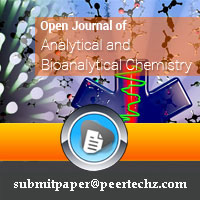
Article Alerts
Subscribe to our articles alerts and stay tuned.
 This work is licensed under a Creative Commons Attribution 4.0 International License.
This work is licensed under a Creative Commons Attribution 4.0 International License.
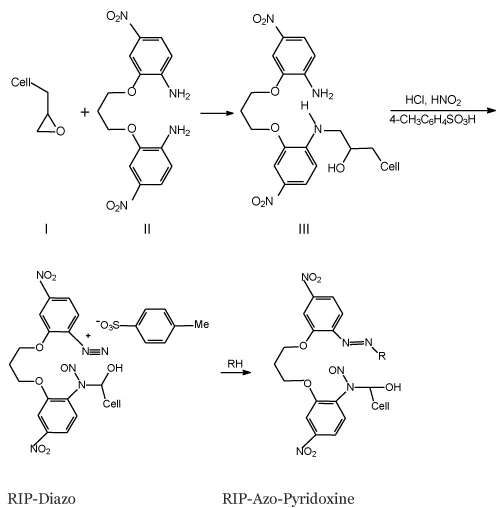
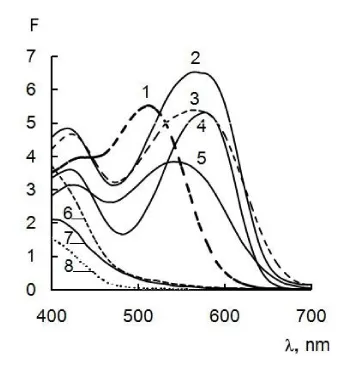
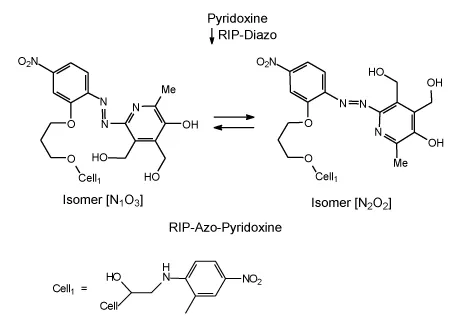
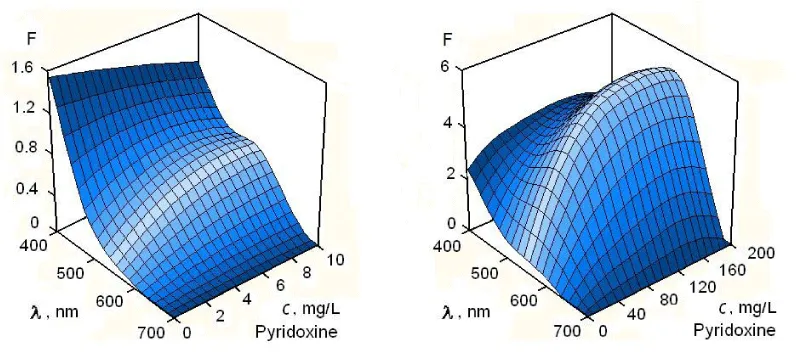
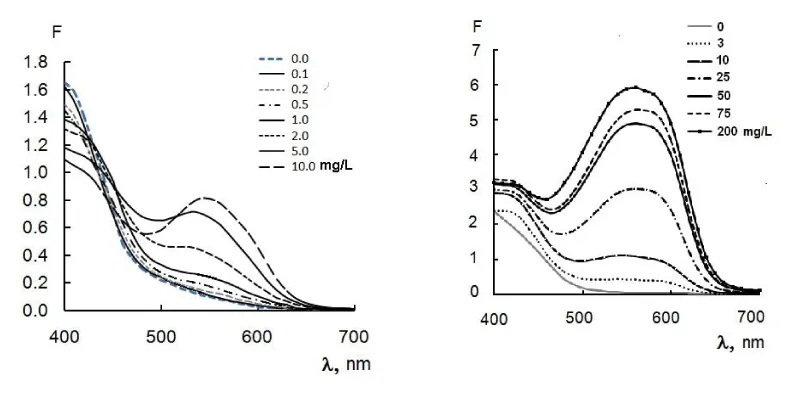
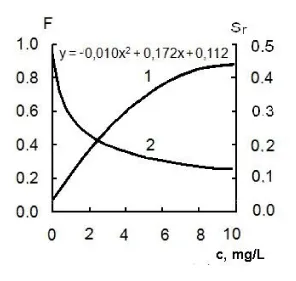
 Save to Mendeley
Save to Mendeley
